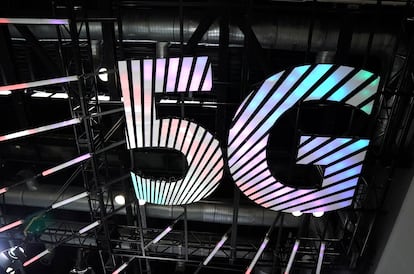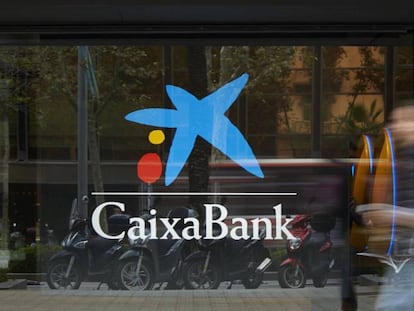Keys to understanding the launch of 5G in Spain
Here is an overview of what you need to know about the new technology, including where and when it will be available

The new generation of mobile networking, known as 5G, has just landed in Spain. All four national operators – Telefónica, Orange, Vodafone and MásMóvil – have launched their first commercial services, but only in the largest cities, with reduced coverage, and with very limited technical capacities.
The early rollout has also been influenced by the Covid-19 pandemic, which has created a greater need than ever for fast, reliable communications as more people switch to remote working and increasingly make use of streaming services.
These are the keys to understanding 5G and its rollout in Spain.
What is 5G?
It is the fifth-generation technology standard for broadband wireless networks and it promises to deliver faster speed, greater coverage, shorter device response times and better features than today’s LTE-4G standard.
Why launch it now?
There are both market and marketing reasons for that. Coronavirus confinements and restrictions on mobility have made remote working and learning a necessity. This requires a quality connection at faster speeds than those offered by 4G or home Wi-Fi connections. Additionally, operators have seen their revenues drop dramatically due to the crisis, while their best customers have switched to low-cost plans. Being able to offer 5G, even if the technology is still far from being fully operational, could be a good way to attract customers.
What are the applications of 5G in the post-Covid era?
Although 5G will one day serve to launch what is known as the fourth industrial revolution – when smart technology will enable machine-to-machine communication, robotics and autonomous cars, among other possibilities – there are already practical applications. Video calls have become very popular and 5G allows for Full HD without connection interruptions or poor-quality sound and images. It also improves the delivery of streaming services such as Netflix, HBO, Movistar+, Orange TV and Vodafone TV. Additionally, it improves the gaming experience.
Where is it available?
In the most densely populated cities, but not in all neighborhoods. In fact, coverage right now is under 30% of the population.
-Movistar switched on its signal in early September in eight major provincial capitals. The company has promised that 75% of the Spanish population will have access to the new mobile network standard by the end of the year, including the 150 cities with populations of over 50,000. But even though the signal is on, the commercial launch will not take place before late October or early November.
- Orange has 5G availability in the most densely populated and centrally located areas of Madrid, Barcelona, Valencia, Bilbao, Seville and Málaga, with coverage ranging between 20% and 30%.
- MásMóvil uses the same network as Orange, and besides the same six cities as the French operator, it is conducting 5G trials in Alicante, Alcobendas, Almería, Ávila, Hospitalet de Llobregat, Huesca, Jaén, Melilla, Ourense and Salamanca. But it only offers 5G to subscribers of its Yoigo brand. Other brands in the group (MásMóvil, Pepephone, Lebara, Lycamobile and Llamaya) will not be offering the service.
- Vodafone was a pioneer of 5G services in the Spanish market, launching them in June 2019, and the company currently offers it partially in 21 cities.
How much does it cost?
Since coverage is still very reduced, for now no operator has raised its prices for customers living in areas where 5G is available. And it is unlikely that companies will do so in future, although this is what happened during the switch from 3G to 4G. Even if rates remain the same, however, customers will need a plan with a lot of gigabytes, because 5G consumes a lot of data.
Why is this still a limited version of 5G?
Companies are offering 5G on the 3.7GHz band, which has low penetration inside buildings, and they are using an intermediate technology that is in fact an evolution of today’s 4G known as 5G NSA (Non-Standalone). This means that it will not provide many of the 5G Standalone specifications. In order to fully enjoy the true possibilities of 5G, residents of Spain will have to wait until the government holds a spectrum auction for the 700 MHz band, a move that is expected in the first quarter of 2021.
Will I have to change phones?
Yes. Right now, all cellphones are made to support 4G. In fact, a lack of 5G-enabled devices has been slowing down the technology rollout. Samsung, LG, Xiaomi, Oppo, One Plus and Huawei have launched a few 5G models, but they are all in the upper price range, coming in at around €1,000. Phone makers are expected to launch more affordable products in the fall. Apple fans are also waiting for the first 5G iPhones, due to come out soon.
How fast will it go?
Internet connections using 5G will be 100 times faster than today’s (although right now the technology is only achieving average speeds of 10 times 4G). This means that data downloads will be even faster than with today’s fiber optic networks. To take an example, a 1GB movie will download in under 10 seconds.
Why is there so much talk about latency, and why is it so important?
The main improvement that 5G will bring is not so much faster speeds as lower latency. This is a device’s response time to execute an order that has been issued, or the time it takes for information to go from the source to its destination. The lower the latency, the faster the reaction by the device we are remotely activating, which could be a video conference or an autonomous car. The new technology will bring this time lapse down from 4G’s 10 milliseconds to one millisecond.
How much investment does 5G require?
Just rolling out the networks and antennas will set Spanish operators back €5 billion. To this must be added the launch and marketing costs.
Is 5G bad for your health?
No. That’s a recurring hoax that’s been given new wings during the coronavirus pandemic by conspiracy theorists. The latter have even accused 5G of propagating Covid-19 through the electromagnetic waves emitted by the antennas. No study conducted by international associations, such as the World Health Organization (WHO), have found any link between 5G and any type of disease whatsoever.
English version by Susana Urra.
Tu suscripción se está usando en otro dispositivo
¿Quieres añadir otro usuario a tu suscripción?
Si continúas leyendo en este dispositivo, no se podrá leer en el otro.
FlechaTu suscripción se está usando en otro dispositivo y solo puedes acceder a EL PAÍS desde un dispositivo a la vez.
Si quieres compartir tu cuenta, cambia tu suscripción a la modalidad Premium, así podrás añadir otro usuario. Cada uno accederá con su propia cuenta de email, lo que os permitirá personalizar vuestra experiencia en EL PAÍS.
¿Tienes una suscripción de empresa? Accede aquí para contratar más cuentas.
En el caso de no saber quién está usando tu cuenta, te recomendamos cambiar tu contraseña aquí.
Si decides continuar compartiendo tu cuenta, este mensaje se mostrará en tu dispositivo y en el de la otra persona que está usando tu cuenta de forma indefinida, afectando a tu experiencia de lectura. Puedes consultar aquí los términos y condiciones de la suscripción digital.
More information
Últimas noticias
Most viewed
- Reinhard Genzel, Nobel laureate in physics: ‘One-minute videos will never give you the truth’
- Oona Chaplin: ‘I told James Cameron that I was living in a treehouse and starting a permaculture project with a friend’
- Pablo Escobar’s hippos: A serious environmental problem, 40 years on
- Why we lost the habit of sleeping in two segments and how that changed our sense of time
- Chevy Chase, the beloved comedian who was a monster off camera: ‘Not everyone hated him, just the people who’ve worked with him’











































